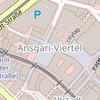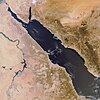Template:Generic:Map Features:place
Jump to navigation
Jump to search
Places
This is used mainly to give details about settlements. See the page titled Places for an introduction on its usage.
| Key | Value | Element | Comment | Photo | Count | |
|---|---|---|---|---|---|---|
Administratively declared places | ||||||
| place | country | See boundary=administrative, admin_level=2 | ||||
| place | state | See boundary=administrative, admin_level=* varies; may not be used in all countries. | ||||
| place | region | See boundary=administrative, admin_level=* varies; may not be used in all countries. For natural regions other keys should be searched. | ||||
| place | province | See boundary=administrative, admin_level=* varies; may not be used in all countries. | ||||
| place | district | See boundary=administrative, admin_level=* varies; may not be used in all countries. | ||||
| place | subdistrict | See boundary=administrative, admin_level=* varies; may not be used in all countries. | ||||
| place | county | See boundary=administrative, admin_level=* varies; may not be used in all countries. | ||||
| place | municipality | See boundary=administrative, admin_level=* varies; depending on the country a collection of arbitrary hamlets, villages and towns may form an administrative unit; sometimes members of a unit reform or join with another municipality as a result of political process. Within a municipality individual settlements are a lot less connected than those within a city, where they have grown connected over time. | ||||
Populated settlements, urban | ||||||
| place | city | The largest urban settlements in the territory, normally including the national, state and provincial capitals. These are defined by charter or other governmental designation in some territories and are a matter of judgement in others. Should normally have a population of at least 100,000 people and be larger than nearby towns. See place=suburb and place=neighbourhood on how to tag divisions within a city. The outskirts of urban settlements may or may not match the administratively declared boundary of the city. | ||||
| place | borough | See boundary=administrative, depending on the country suburbs in larger cities are often grouped into administrative units called boroughs or city districts; using the value borough avoids name confusion in countries that declare districts within their states or counties. | ||||
| place | suburb | A distinct section of an urban settlement (city, town, etc.) with its own name and identity. e.g.
|
||||
| place | quarter | A named part of a bigger settlement where this part is smaller than a suburb and bigger than a neighbourhood. This does not have to be an administrative entity. The term quarter is sometimes used synonymously for neighbourhood. |
||||
| place | neighbourhood | A named part of a place=village, a place=town or a place=city. Smaller than place=suburb and place=quarter. The term quarter is sometimes used synonymously for neighbourhood, but may also stand for borough or suburb and hence is often avoided in OSM. See |
||||
| place | city_block | A named city block that is part of a place=city. See |
||||
| place | plot | A named plot is a tract or parcel of land owned or meant to be owned by some owner. | ||||
Populated settlements, urban and rural | ||||||
| place | town | A second tier urban settlement of local importance, often with a population of 10,000 people and good range of local facilities including schools, medical facilities etc and traditionally a market. In areas of low population, towns may have significantly lower populations. See place=neighbourhood and possibly also place=suburb on how to tag divisions within a town. | ||||
| place | village | A smaller distinct settlement, smaller than a town with few facilities available with people travelling to nearby towns to access these. Populations of villages vary widely in different territories but will nearly always be less than 10,000 people, often a lot less. See place=neighbourhood on how to tag divisions within a larger village. | ||||
| place | hamlet | A smaller rural community typically with fewer than 100-200 inhabitants, few infrastructure. | ||||
| place | isolated_dwelling | Smallest kind of human settlement. No more than 2 households. | ||||
| place | farm | A farm that has its own name. If the farm is not a part of bigger settlement use place=isolated_dwelling. See also landuse=farmyard | ||||
| place | allotments | Dacha or cottage settlement, which is located outside other inhabited locality. This value is used mainly in Russia and other countries of the former Soviet Union, where a lot of such unofficial settlements exist | ||||
Other places | ||||||
| place | continent | One of the seven continents: Africa, Antarctica, Asia, Australia, Europe, North America, South America | ||||
| place | archipelago | Identifies the relation of an archipelago, which contains several islands and islets. | ||||
| place | island | Identifies the coastline of an island (> 1 km2), also consider place=islet for very small islands | ||||
| place | islet | Identifies an islet (< 1 km2). | ||||
| place | square | For a |
||||
| place | locality | For an unpopulated named place. | ||||
| place | polder | A polder. | ||||
| place | sea | A part of an ocean. | ||||
| place | ocean | The world's five main major oceanic divisions. | ||||
| place | User Defined | All commonly used values according to Taginfo | ||||
Additional attributes | ||||||
| population | Number | Number of inhabitants of the place. Among other things, it might be used in selecting which name to render at a given zoom level at what font size. | ||||
| is_in | Text | Optional. Rudimentary way to describe boundary hierarchies, e.g. place=suburb, name=Eccleshall, is_in=Sheffield,South Yorkshire,England,UK. When boundary polygons exist, this is seldom needed. Unless categorization is wrongly done by e.g. Nominatim. | ||||
This section is a wiki template with a default description in English. Editable here.
This documentation is transcluded from Template:Generic:Map Features:place/doc. (Edit | history)
Note to editors: Please don't categorize this template by editing it directly. Instead, place the category in its documentation page, in its "includeonly" section.
Note to editors: Please don't categorize this template by editing it directly. Instead, place the category in its documentation page, in its "includeonly" section.
Template for the Places section in the Map Features page. Use the default English text or use the template arguments for your translations.
==Usage== All parameters are optional. By default, text is in English. English writers shall write their comments in the template itself (avoiding double edition). Other languages are translated in template arguments, not in the template itself. Set |lang = <your_language_code>: to make all key and value links point to translated pages (note the : at the end). Example: |lang = DE: == Section header == |name= (section header line) |description= (displayed between the two tables; optional) == One key/value row == |place:key= |city:value= |city:desc= |city:render= |city:photo= You can use |city:value:alt=[[<any other link>]] as alternatives for :key and :value links, for example to link to the english pages.






















